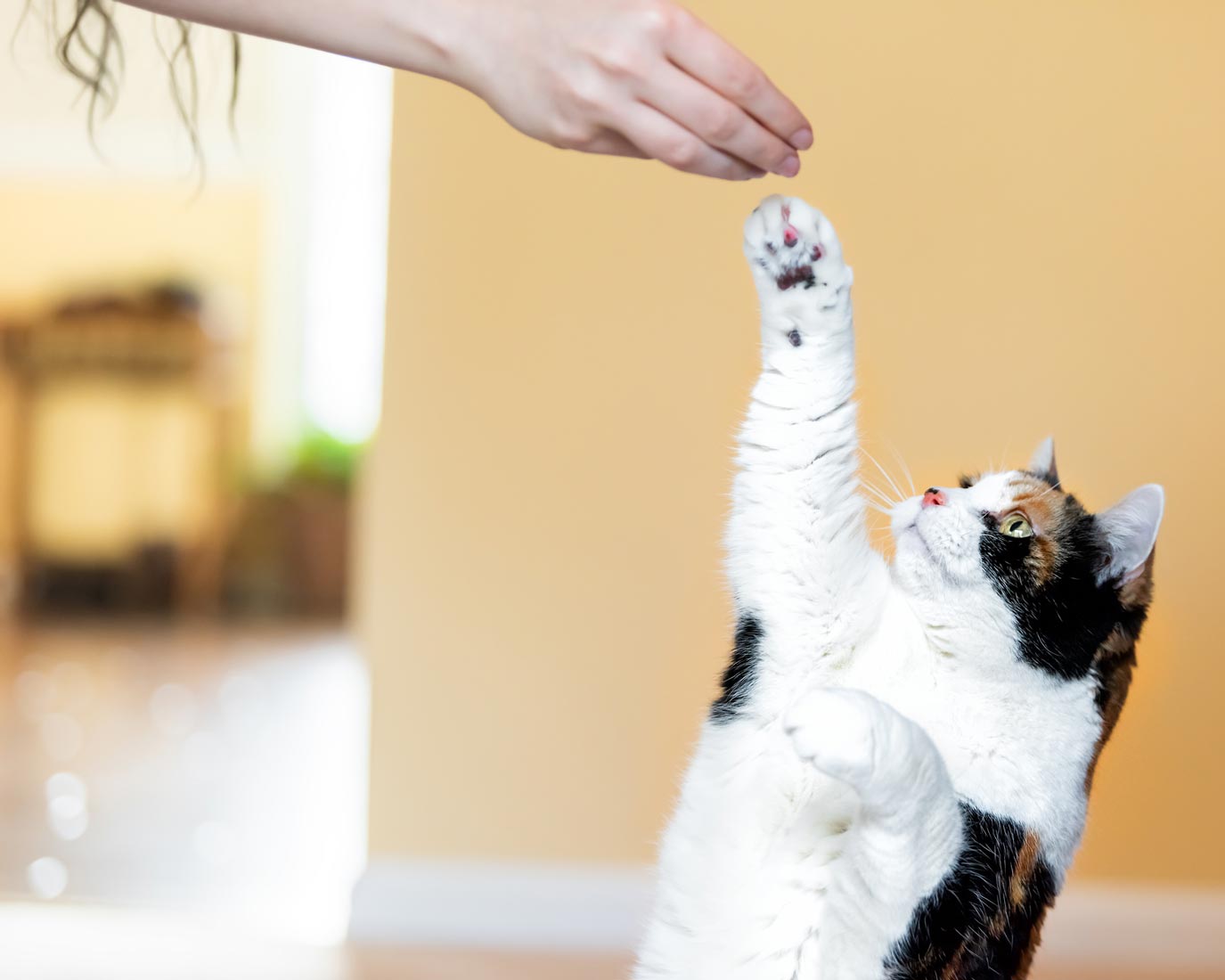Avoid These Dangers of Homemade Cat Treats

Many cats love treats and pet parents like giving them to their cats. Making homemade cat treats can be an excellent way to avoid the high calorie and fat content present in many prepared treats. But there are some things to keep in mind if you're going to give it a try.
Treats can help you train your cat too. Training is great for your cat's brain, and it's a wonderful bonding activity for the two of you.
Avoid Cat Toxic Ingredients
When you're cooking something for your cat to eat, you must always remember that some things humans can safely consume are toxic for cats. These foods include grapes and raisins, onions and garlic, and xylitol, which is a popular sugar alternative in human products.
Don't use any ingredient you aren't sure about. You can start here to learn what to avoid: "Foods Toxic to Cats."
Don't Add Sugar
Cats don't usually have a sweet tooth like humans and dogs might. Not only do they usually not like sweets, but they also don't need additional sugar. You don't need to put frosting or sugar in or on your homemade cat treats.
Use Proper Food Safety Cooking Techniques
Cats can suffer from bacterial infections from improperly handled food just like humans can. Use all the same safety precautions you would when cooking for yourself when you are making treats for your cat. For example, meat and eggs need to be thoroughly cooked.
This article is about making cat treats at home. For information on making your cat's primary diet at home, check here: "Homemade Diets for Cats" and "Can Cats Be Vegetarians or Vegans?"
Use BPA-Free Cooking Containers
If you're going to use molds to cook the treats, look for BPA-free varieties. BPA might contribute to the development of certain types of cancer, so avoiding it is a good idea.
Be Mindful of the Calorie Count
Treats shouldn't account for more than 10% of your cat's daily calorie intact, even when they are homemade. If you give your cat too many treats, it can contribute to obesity, which will make your cat more susceptible to developing conditions like diabetes and heart disease.
Also, if you give your cat too many treats, she might eat less of her regular food. Over time, that can lead to life-threatening nutritional deficiencies.
Keep your homemade treats small and don't give too many each day.
You May Also Like These Articles:
Wet Food vs. Dry Food For Cats
What Should You Do If Your Cat's Food Is Recalled?
Why Do Some Cats Carry Food Out Of Their Bowls to Eat It?
Helpful Tips for Getting Your Cat to Eat More Canned Food
Notice: Ask-a-Vet is an affiliated service for those who wish to speak with a veterinary professional about their pet's specific condition. Initially, a bot will ask questions to determine the general nature of your concern. Then, you will be transferred to a human. There is a charge for the service if you choose to connect to a veterinarian. Ask-a-Vet is not manned by the staff or owners of CatHealth.com, and the advice given should not delay or replace a visit to your veterinarian.




